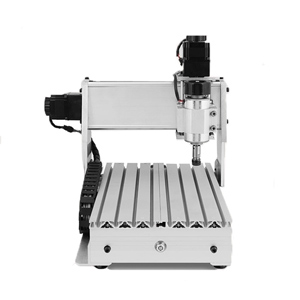What is CNC Router Machine Used for?
At present, CNC router machines have gradually replaced traditional manual engraving, because CNC machines have unmatched speed, precision, and energy. Technology makes CNC router machines many advantages, and they can also automatically typeset, so it can effectively reduce costs and save materials, so people will start to use them. ATO CNC router machine is suitable for various materials, such as aluminum, bronze, plastic board, wood, PVC, PCB or other plastics, bakelite, etc. This CNC router machine is mainly used for drilling, circuit board engraving, small parts cutting and mold engraving, etc.
During the processing of the CNC router machine, the deformation of general materials is relatively small, and the accuracy can reach about 0.3 mm. Metal CNC router machines can be effectively used in lamps, kitchen utensils, advertising decorations, engineering boards, electrical panels and steel structures, usually, The thickness of the plate can be between one millimeter and 30 millimeters, so it has better practicality. In addition, you also need to know when selecting, whether it is a CNC router machine or an optical fiber CNC router machine, its power will be different, and it can generally be considered between tens of hundreds of watts to 10,000 watts of large-scale machine tools.
What can a CNC router machine do?
- Cutting and engraving. It uses the cutting method to process the desired pattern on the surface of the material, that is, first decompose and express the pattern into several lines, and then use the laser to cut these lines to obtain the pattern represented by the cutting line.
- Concave engraving. Cut off a portion of the pattern and leave the surface of the material around the pattern. There are two cases here. The first case is where the cutting force is the same at every point on the pattern. The engraving pattern is mainly reflected in the outline shape. The second case is based on light-dark distribution and pattern contrast. The "dark" parts of the pattern are cut more, and the "light" parts of the pattern are cut less or less. The former is suitable for engraving text, animals, plants and other patterns based on appearance, while the latter is more suitable for engraving detailed patterns such as facial expressions of characters.
- Convex engraving. Contrary to die engraving, this engraving process only cuts the material around the pattern, with the same cutting force at each point, but the material of the pattern itself is not cut. This engraving method is suitable for the expression of the text, graphic outlines, etc. In the latter two engraving methods, the material is removed by cutting a linear groove each time the laser head travels over the cutting face and then moves a short distance before cutting the next line. Usually, the distance between the two grooves is 0.05-0.5mm. In this way, multiple linear cuts are used for the purpose of removing the area-forming material required for both engraving forms. Of course, in the second form of die engraving, the size of the grooves, especially the depth of the grooves, will vary on the same cutting line as needed.

